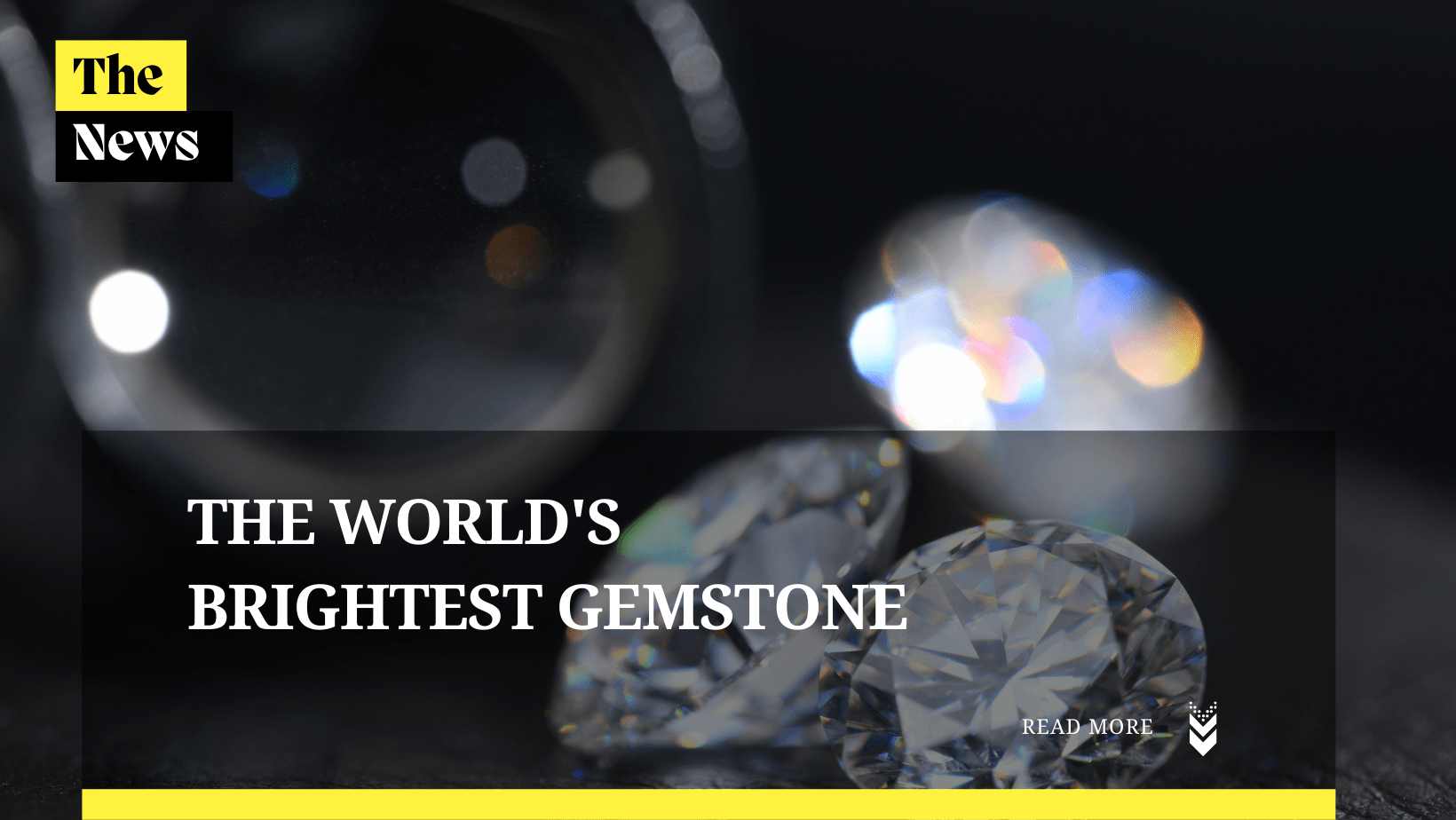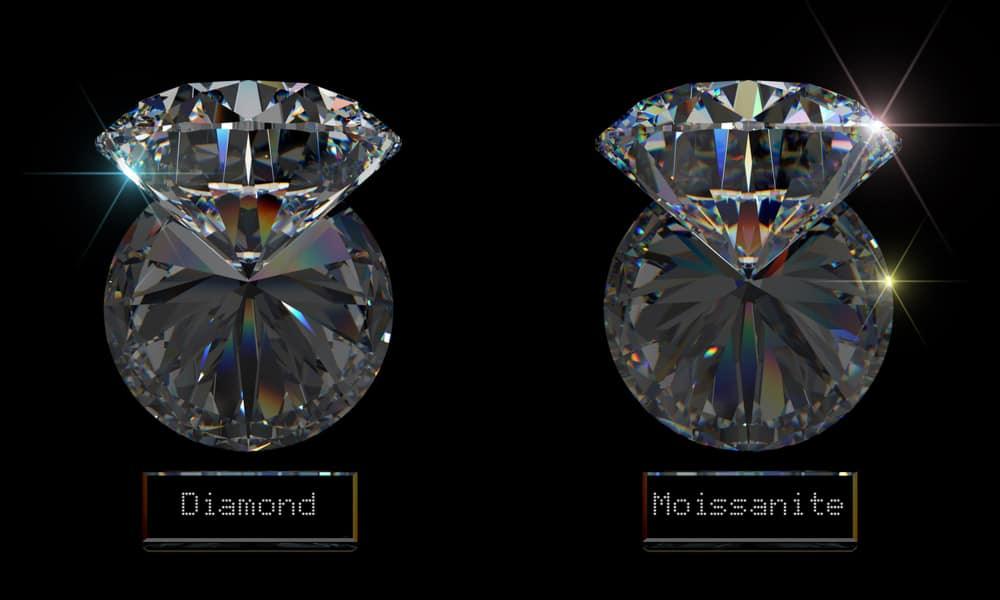Article: Moissanite is the Brightest Gemstone and No One is Talking About It

Moissanite is the Brightest Gemstone and No One is Talking About It
Though still unfamiliar to some, moissanite’s popularity as a diamond-alternative gem has soared in recent years thanks to a number of reasons. Worldwide, it is the second most popular gemstone after diamonds for fine jewelry and engagement rings.
While often compared alongside diamonds, moissanite is a unique stone with its distinctive traits and aesthetic qualities. Moissanite’s growing popularity, especially among environmentally and socially conscious millennials, represents a massive shift in values towards creating a more sustainable future.
Despite moissanite’s beauty and diamond-like durability, its rarity on earth prevented it from becoming more popular and widely used. Nearly a hundred years later, in the mid-1990s, scientists began to perfect a process for synthesizing moissanite in a lab. Since then, they have been able to produce lab-grown moissanite stones that rival even the finest diamonds in size, detail, and brilliance.
In terms of appearance, when comparing moissanite vs. diamonds, the two gems seem similar. The truth is, while moissanite shares some of the diamond’s best traits (such as beauty & durability), it also has its own set of unique benefits that have driven its popularity in recent years. Let’s take a look at the top reasons to pick moissanite over diamond when shopping for jewelry.
- Moissanite Is Cheaper Than Diamond
One of the most appealing aspects of opting for moissanite over diamond is that moissanite is vastly cheaper than diamonds. This should not be taken as meaning moissanite is simply a cheaper “knock-off” version of a diamond.
On the contrary, moissanite contains all of the most desirable aspects of a diamond (& more) without the astronomical price tag. This is thanks to our ability to grow moissanite in a lab setting in a consistent, reliable, and cost-effective way. While diamonds can also be created in a lab, the process is a lot more costly and complicated than moissanite, and they ultimately aren’t much cheaper.
A moissanite engagement ring, on average, costs less than 1/10th the price of a diamond ring.
- Moissanite Is More Sustainable Than Diamonds (Socially & Environmentally)
The diamond industry has long been known to engage in mining practices that are harmful to the environment and exploit cheap local labor. Naturally-occurring moissanite is incredibly rare on planet earth, which means there are no questionable major mining operations procuring them.
The fact is that lab-grown and naturally occurring moissanite are chemically identical to each other. Because of this, lab-grown moissanite should not be thought of as an imitation stone but as the real deal. This bypasses two of the major conflicts associated with diamonds since moissanite does not need to be dug out of the earth in mass quantities.
As younger and new generations begin to step up to the plate in the fight to protect our planet, the need for socially and ecologically sustainable options in all corners of our lives has become ever more evident. This is one of the driving factors behind moissanite’s exploding popularity in recent years, as we begin to redefine how we value beauty in this world.
- Unparalleled Brilliance & Color
Moissanite has both a high refractive index and dispersion value. These are just two fancy scientific ways of measuring how much light the gemstone reflects in its cut. Moissanite is renowned for its radiance and fiery brilliance and outscores diamond in both of these metrics.
Not only are moissanite gems quantifiably more dazzling than diamonds, but they are also available in a broader range of color options to suit your style. Thanks to modern lab techniques, scientists can produce moissanite in hues that are more even, and consistent throughout than diamonds generally are.

- Moissanite Is Tough & Durable
One of the reasons diamonds have become so treasured over time is that they are the hardest naturally occurring substance found on earth. This means that when cared for, they can virtually last forever and be passed down from generation to generation. It also means that they are tough enough to stand up to general, everyday wear without worrying too much about damaging the stone.
Moissanite is an excellent diamond alternative because it is nearly as hard as diamond. Gems’ hardness is measured on the MOHS scale, ranging from 1 (softest) to 10 (hardest). Diamonds rate as a perfect 10, meaning they are the hardest gemstone at the end of the spectrum.
Moissanite stones score between 9.25-9.5, which puts them right up there in hardness. While it is slightly less, you can be sure that moissanite is every bit as reliable and durable as a diamond is and will last you a lifetime.
Conclusion: Why We Believe Moissanite Is Better Than Diamonds
When deciding between a diamond engagement ring and a moissanite engagement ring, the answer is pretty straightforward. Moissanite provides a more sustainable and ethical alternative relative to diamonds – and it is much cheaper and easier to produce. With moissanite, you sacrifice nothing in customizability, beauty, and durability and will have a piece of jewelry that you can treasure for a lifetime.

